“I’ve been married to Byron for 23 years. We always dreamed of having a large family and were devastated when we had four miscarriages early on in our marriage. Though I had medical complications, we were able to have our daughter, Tessa, and our daughter, Ruby. Because of those complications and because adoption had been something we had talked about even when we were just dating, we knew adoption was the way we wanted to continue to build our family.
We adopted our son, Leo, from the Gladney Center for Adoption in Ft. Worth, Texas in 2010. It was an amazing experience for us and immediately, we knew we wanted to adopt again. We welcomed our daughter, Kamari (she goes by Kiki), in 2013. Once again, I got the feeling I wanted to adopt ‘just one more time.’ Byron quickly agreed and we welcomed our son, Emmett, in 2017. All of our children are amazing.
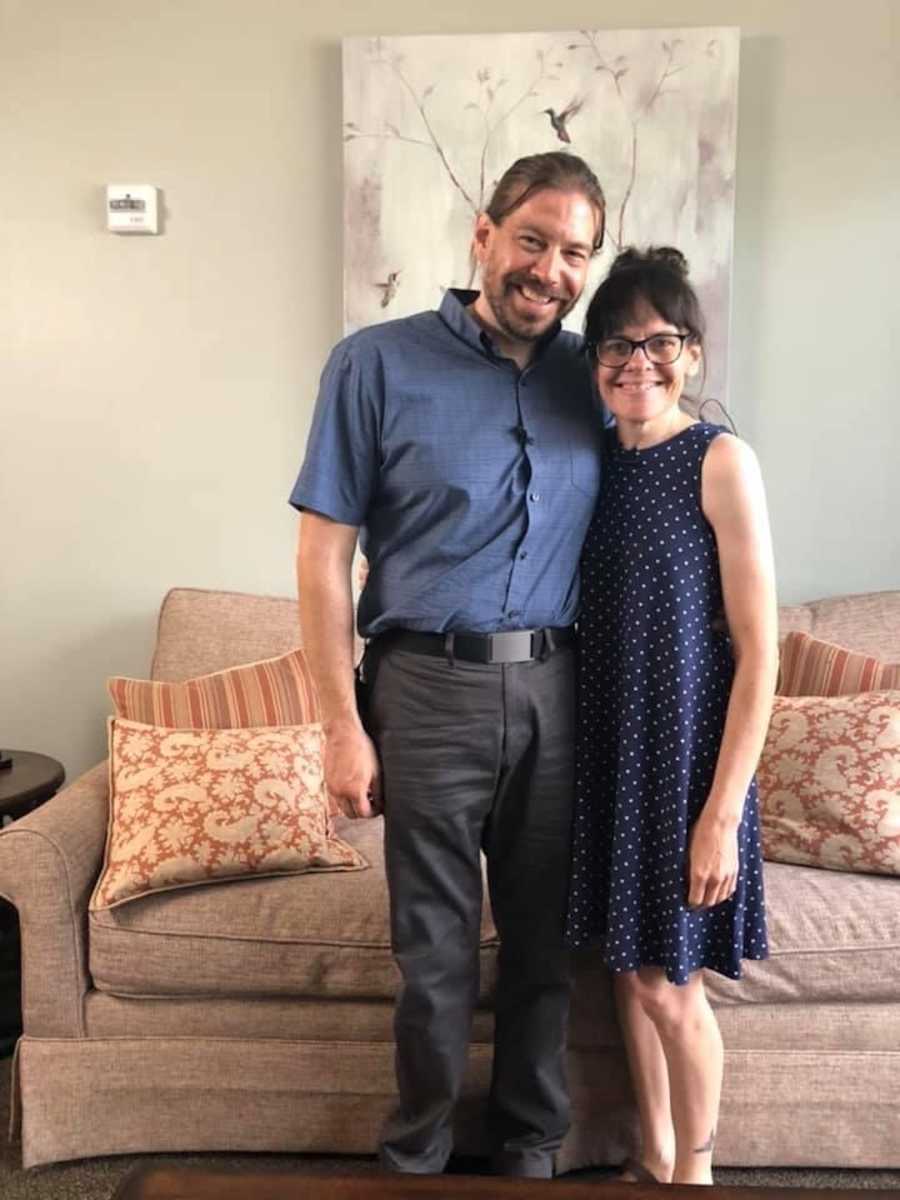
In late 2018, I felt a huge push to adopt again. I knew I wanted to adopt a baby with medical needs. It was something I couldn’t ignore. It was keeping me up at night. I kept bringing it up to Byron. After a few weeks of me constantly talking about it, he said, ‘If this is something you feel so strongly about, let’s call Gladney and make it happen.’ The very next day, I called our caseworker, Tanya, at the Gladney Center and talked to her about adopting from their Medically Fragile program. After three adoptions already, Tanya knew our family well and knew this was something we were serious about. We started the home study process once again and 4 months later, we got THE CALL.
I’ve always been the one to get that phone call, but this time, Byron got it. He texted me, ‘4-month-old baby girl with a form of dwarfism.’ Without even a second thought, I texted him back, ‘YES! Tell her yes. A thousand times, yes!’
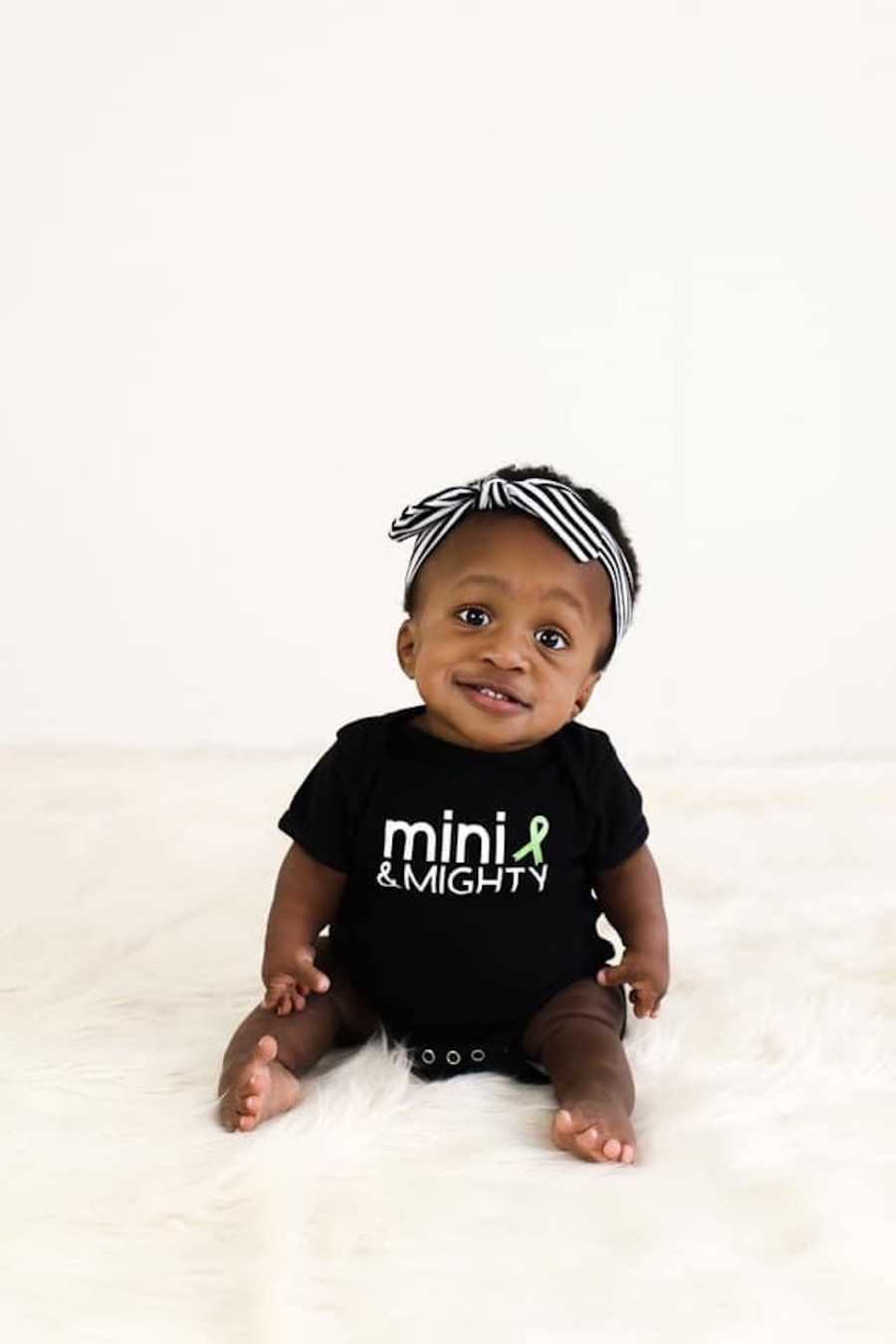
After going over her full history and diagnosis, we learned the form of dwarfism Ivy has is called diastrophic dysplasia. It’s rare, affecting one in 500,000 births. Diastrophic dysplasia affects all areas of the body: bones, joints, cartilage, hands, feet, neck, and spine. It causes short arms and legs, but a normal size torso. Mobility will be one of her biggest hurdles due to all of the joint issues and pain.
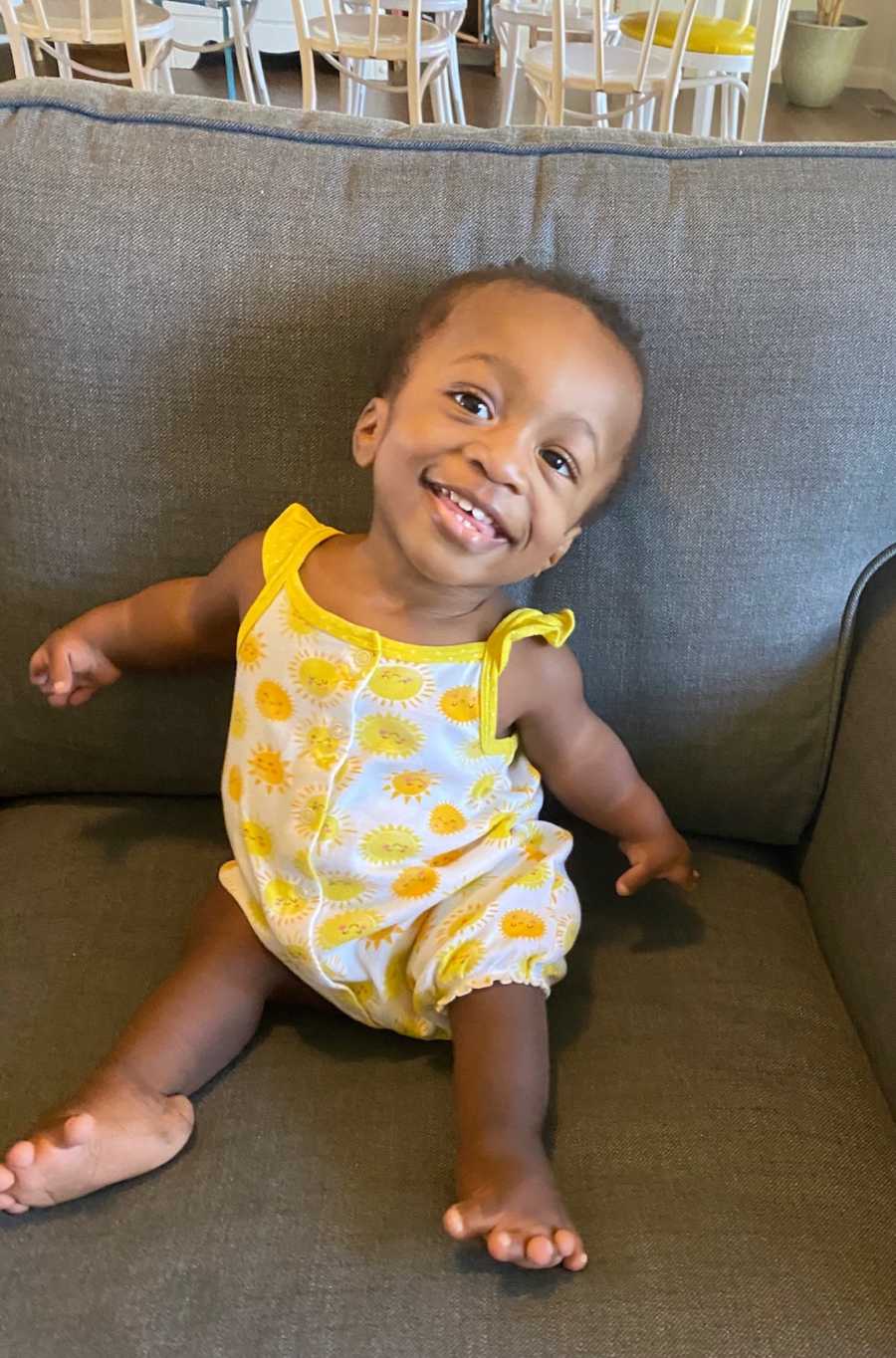
Unfortunately, diastrophic dysplasia is degenerative, which means it will get worse over time. I’ll admit, googling her diagnosis was a scary thing. I had a million thoughts going through my head, but I knew this baby girl was meant to be ours. My husband also assured me this was something we could handle. I remember him saying, ‘We’ve got this.’ As an amputee himself, he knows what it’s like to grow up with a physical disability. He knew Ivy’s diagnosis was something we could take on without any doubts or hesitation.

We drove to Ft. Worth, Texas and Ivy was placed into our family on June 4, 2019. That day had so many different emotions! We were excited, nervous, scared, happy—I think we felt it all that day. Ivy was (and still is) very loved by everyone at Gladney, so it was not only very emotional for us but for everyone there who had grown to love her so much.
When we got back to the motel with her from placement, we were still feeling so many emotions. Ivy seemed so small and so fragile. (I soon realized she is not fragile at all!) Ivy, being 6 months old, had a bit of a hard time adjusting to us. She cried a lot that night. I held her and we cried together. All I could do was hold her and tell her how much I loved her.
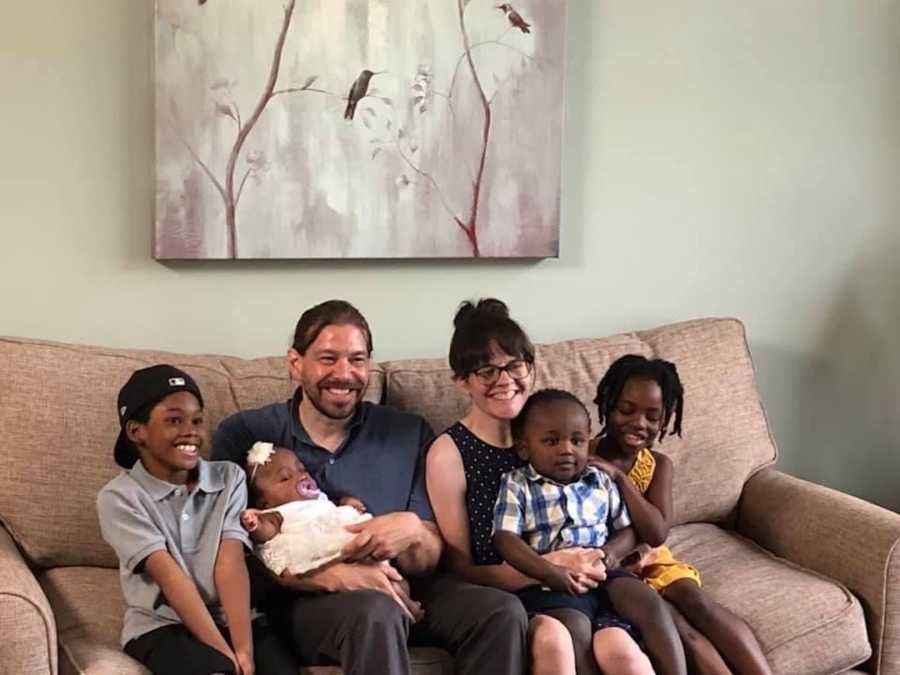
The next morning, she woke up, looked up at me, and smiled. We had made it through our first night together! The next night was much easier. Very quickly, she began to get used to us and the noise (with five other kids, it’s always noisy). She quickly bonded to our other children, especially our son Leo.
When we got home from Texas with Ivy, we slowly began to adjust to life with six kids and life with a baby with medical needs. We were still learning a lot about her diagnosis and trying to connect with other families who have children with the same diagnosis. Because it’s rare, that has been difficult. We have been able to find a few families with children with DD and have been able to connect with a lot of families with children with other forms of dwarfism. I have connected with a couple of adults who have DD, and they have been an extreme source of strength and knowledge for me.
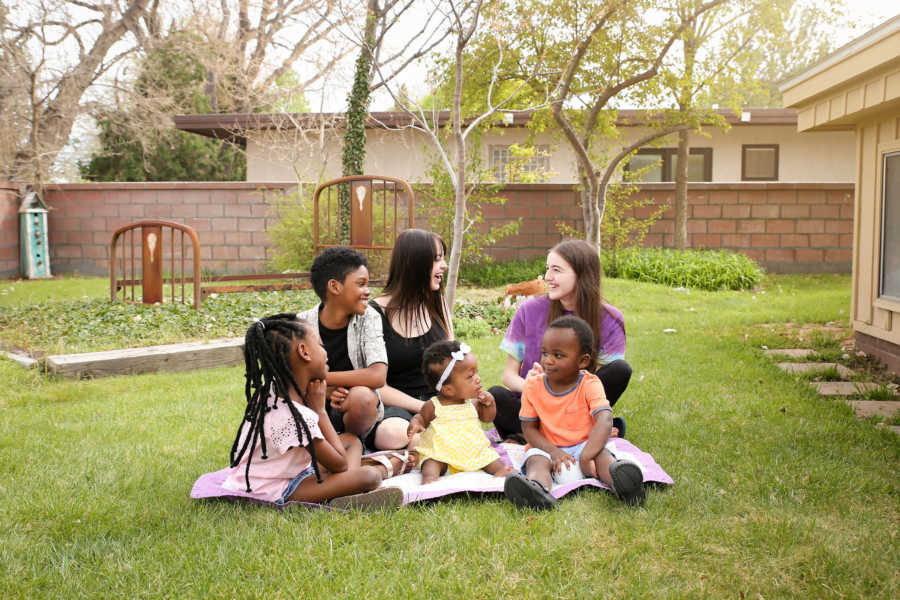
One major area of worry, in the beginning, was her medical care. We found all of the orthopedic doctors we took her to in Colorado had never had a patient with DD before. That is a horrible feeling to hear them say, ‘Well, I’ve never treated a patient with this, but I’m willing to try!’ We didn’t want Ivy to be their first patient and for them to ‘try.’ We wanted Ivy to have a team of doctors who knew everything about her diagnosis.
Through social media, we found Dr. Mackenzie at Nemours DuPont Hospital in Wilmington, Delaware. We knew we had found her doctor when we heard about him and all he has done for so many children. After flying to Delaware for her first appointment with him, it felt like a huge weight was lifted from my shoulders. I remember feeling so much relief walking out of that appointment. It’s not ideal to fly from Colorado to Delaware for appointments, but it is so worth it, and I would fly around the world to make sure she has the best medical care we can find.
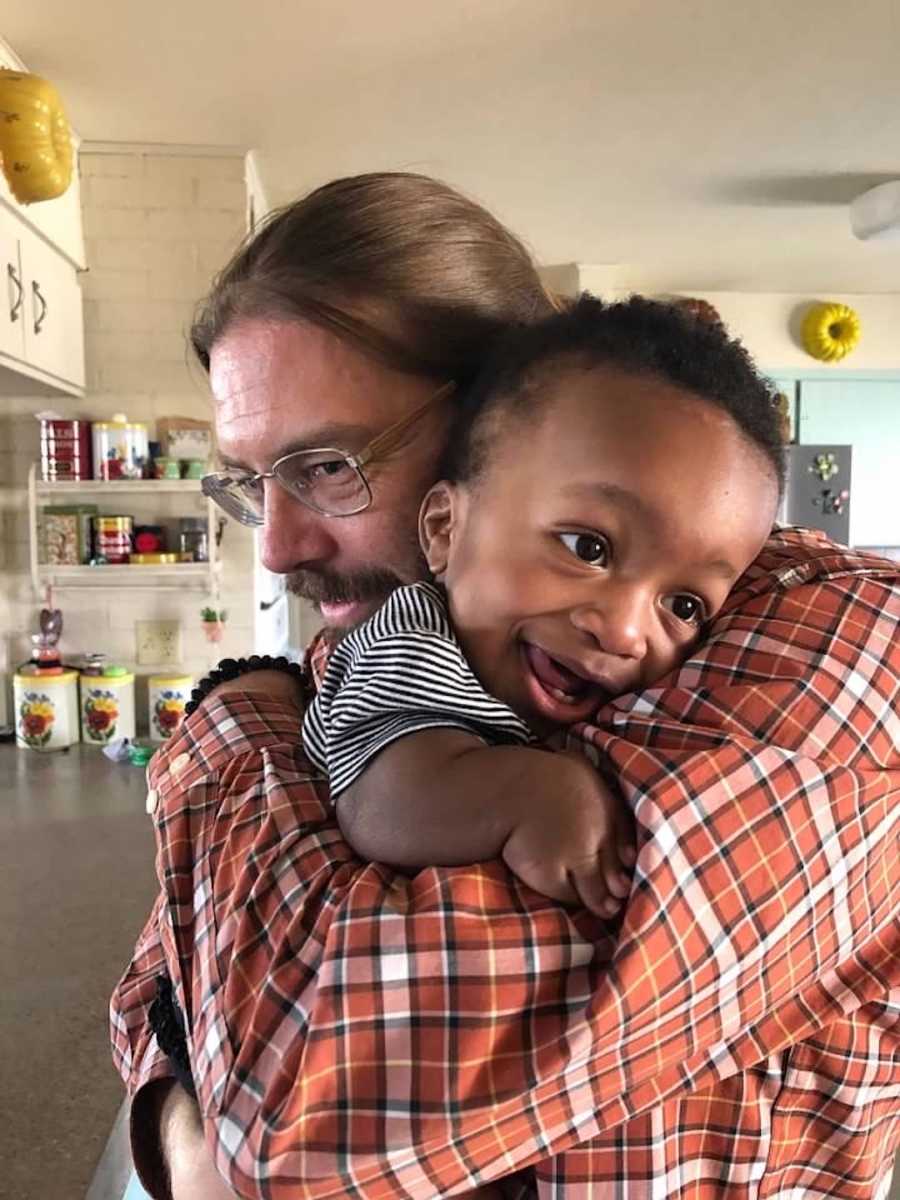
When Ivy was first placed with us, her neck and back strength were very weak. She couldn’t sit up or rollover. She started physical therapy very soon after placement, and we were so lucky to find a physical therapist who Ivy responded to very well. He told me, ‘I won’t treat her any differently than any of my other patients. I will push her to her limit.’
Week after week, they worked so hard together, and she started rolling over. Then after 7 months, she started sitting up. Watching her hit those milestones and be so proud of herself was a beautiful thing. She started being able to put weight on her legs shortly after this and on the advice of her doctor, he told us to get her a little walker to get her ‘up and going.’ I’ll admit (and I feel ashamed admitting this) I didn’t know if she would be able to ever stand, let alone walk, because her legs still seemed so weak. And she also has severe hip dysplasia, so I worried. But not my husband—he was determined.
Her doctor told us to make her a little walker out of PVC pipes since they don’t make walkers small enough (or light enough) for children her size. So my husband got to work and was so proud of this little walker he made. We sat Ivy in front of it and sat her on a little yoga block so she could get a feel for it. Within a few days, she pulled herself up to it. She squealed with happiness and sat back down and clapped her hands. She was so happy and I felt this huge rush of excitement at the thought of her actually being able to stand with this walker. Well, within a few days, she was taking steps with it. She was so happy, which made it even sweeter. Within a week, she was literally chasing her siblings around the living room. She goes everywhere with that walker. She dances, she runs. It has given her wings!
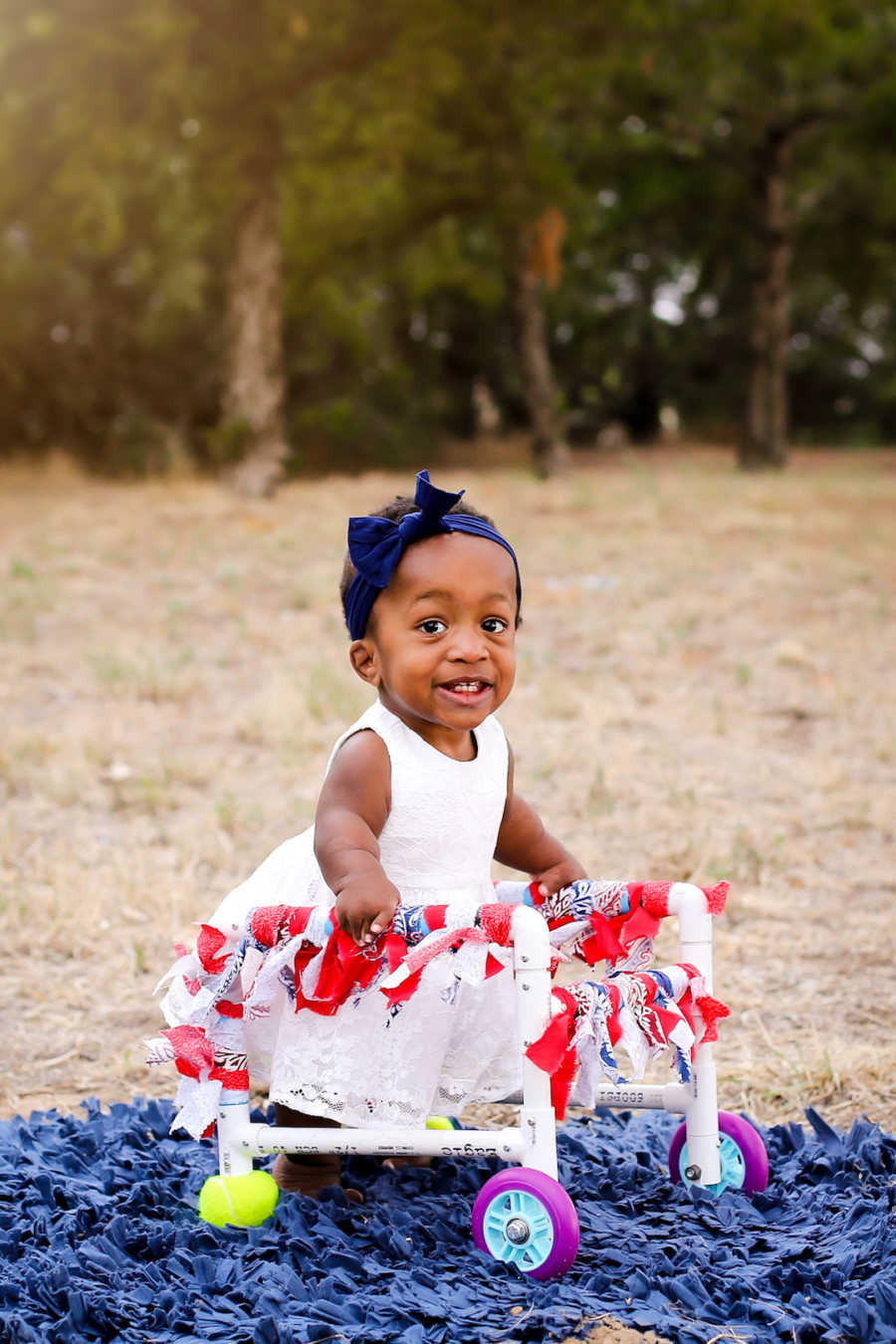
Because diastrophic dysplasia is degenerative, we aren’t sure what her future mobility will look like. As she gets older, she will experience a lot of joint issues and pain. An adult I know with DD has told me she can’t remember a time in her life when didn’t have pain. For now, we are making accommodations to our home to help her access what she needs. We are in the process of renovating our downstairs bathroom, putting in a small toilet, low sink, and a shower that is accessible for her. We are also building a ramp for her to get into the house. Our biggest hope for her right now is to be able to get her a service/balance dog to help with her balance and walking.
People often ask me what it’s like to raise a child with diastrophic dysplasia. Honestly, it’s not much different than raising a child without a medical need. We love her, we take care of her, and we live day-to-day. There is extra stress with doctor appointments, therapy appointments, flying across the country to see her specialist. And always the ‘what if’ worries. But honestly, she’s just like any other baby. In the end, I want the same things for her as I do for them. I want to make sure she is comfortable, safe, and feels secure. I want to raise her as a strong, independent person who has no limits.
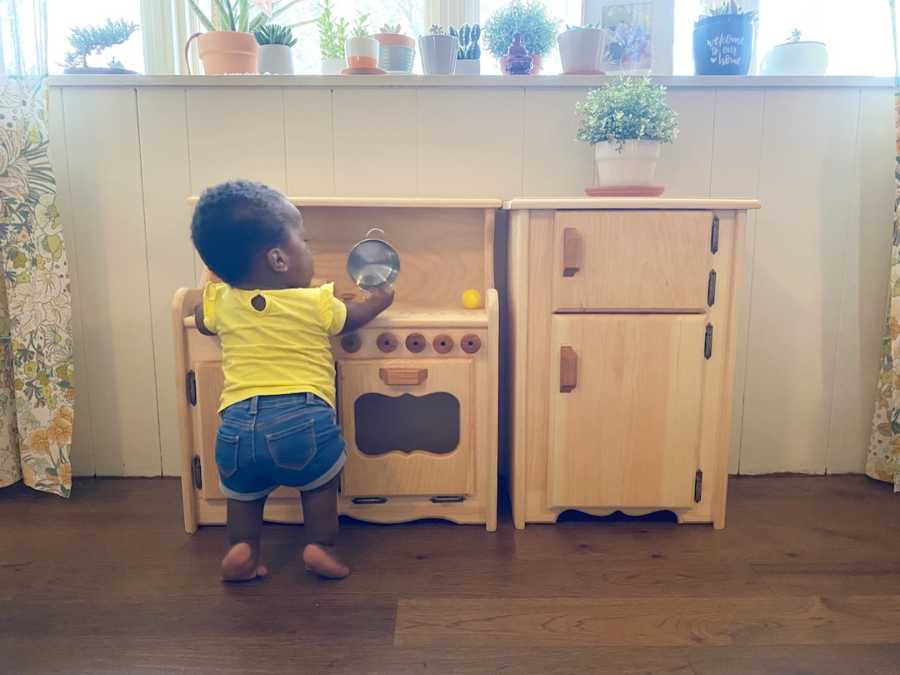
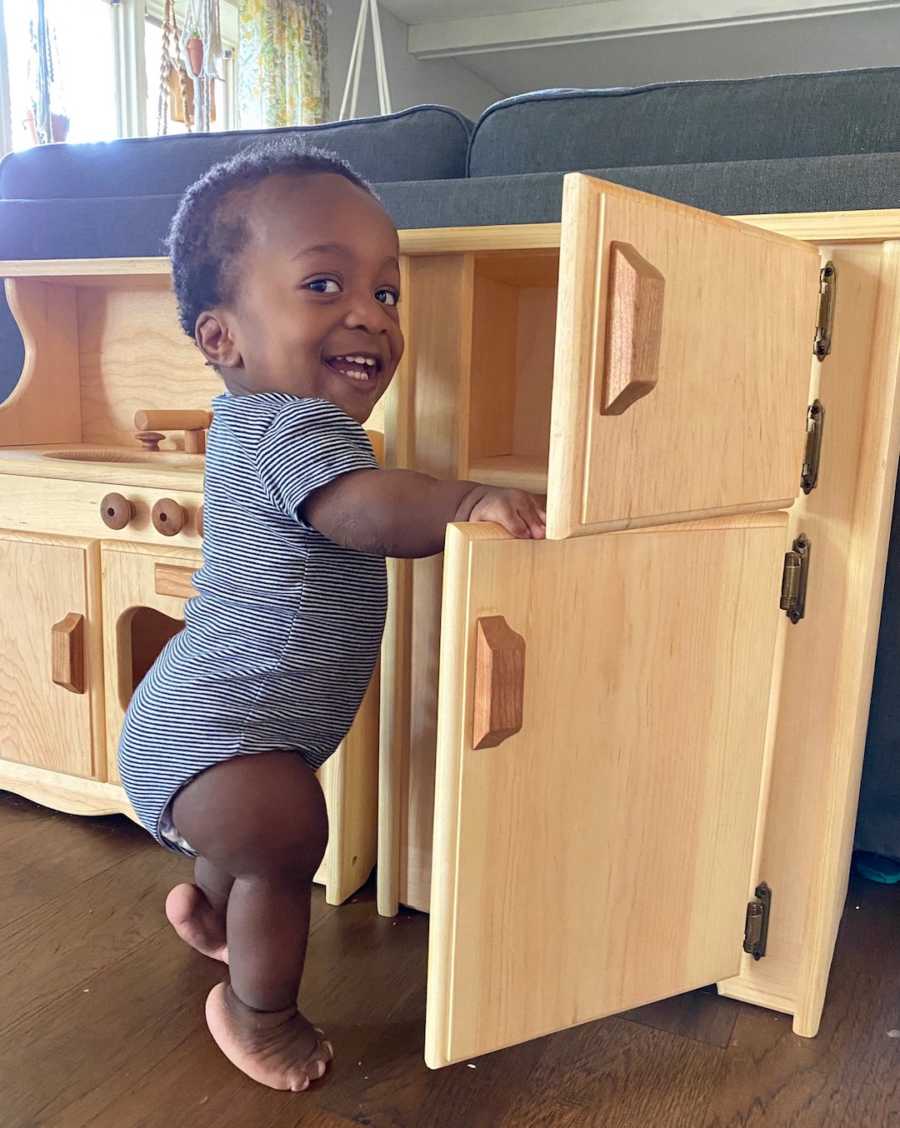
When people look at Ivy, I want them to see her ABILITY before her DISABILITY. She is a very capable, strong, healthy little girl who just happens to have a physical difference. She has shown me to not put any limits on her. The things I’ve worried about her not being able to do, she has done. I know she will continue to raise the bar for herself and keep doing the hard things.
I want people to know adopting a baby with special needs doesn’t have to be scary. If it’s something you’re capable of doing and you’re willing to do it, then go for it! I don’t want to paint a false picture that everything is super easy and wonderful all the time because it’s not. Adoption is hard. It’s emotional and messy and far from easy. We’ve done it four times and each time has been so different. Each adoption has presented its own challenges, both during and after, but they are definitely challenges worth facing.
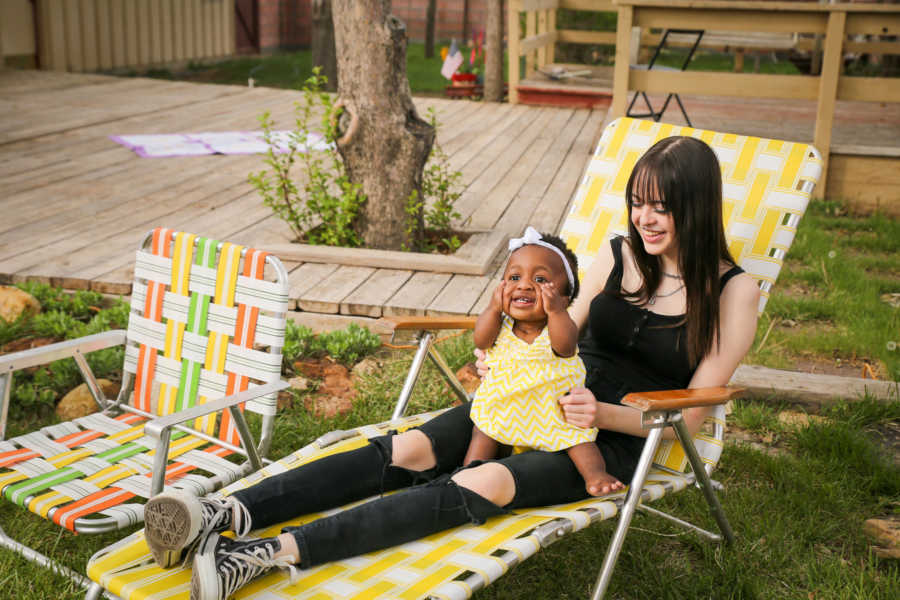
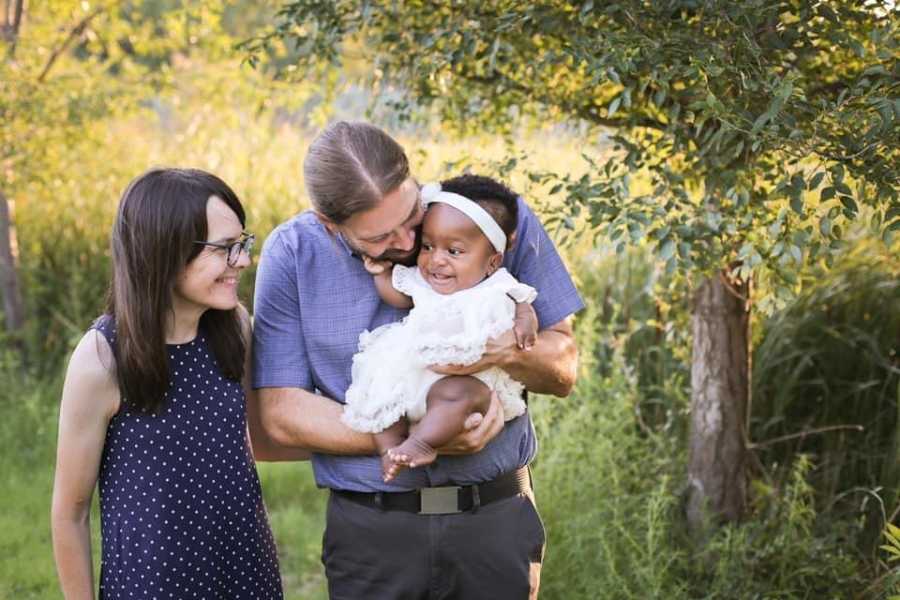
My advice to someone thinking of adopting a child with special needs is to know your limits. Know what you’re capable of handling and what sacrifices you are willing to make in your life. Don’t be afraid to say no to a situation (we have said no to many situations) and listen to both your heart and your mind. On the other hand, don’t be afraid to take some risks, because you never know how amazing that risk could turn out to be.
Having a child with medical needs has changed our lives. I see the world differently. I see the joy in the little things. I see the good in people. She has changed me as a mom, she’s changed our family dynamic, and she’s made us all better people just by being Ivy.”
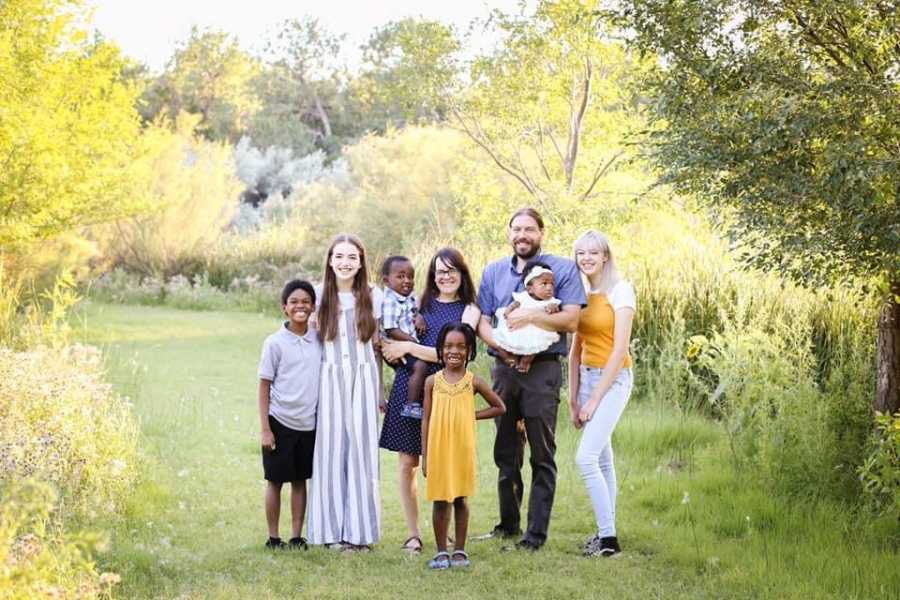
This story was submitted to Love What Matters by Kari Hall from Colorado. You can follow their journey on Instagram. Do you have a similar experience? We’d like to hear your important journey. Submit your own story here. Be sure to subscribe to our free email newsletter for our best stories, and YouTube for our best videos.
Read more powerful stories like this:
Provide beauty and strength for others and SHARE this story on Facebook with family and friends.



